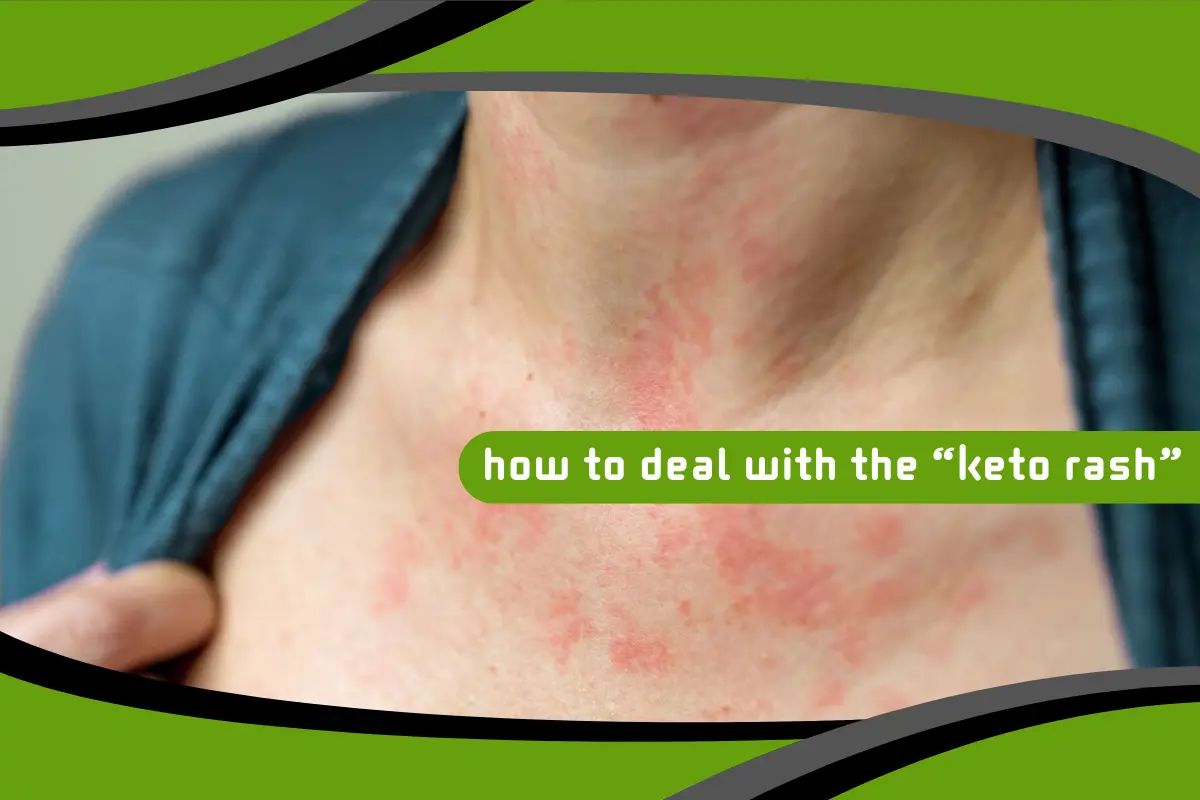The “Keto Rash,” known medically as prurigo pigmentosa, is a rare inflammatory skin condition that sometimes affects individuals transitioning into a ketogenic diet. It’s characterized by itchy, red, and sometimes painful rashes that appear mostly on the torso, neck, and back. While not everyone on a keto diet experiences this, those who do often find it alarming. Understanding the condition’s root cause, symptoms, and management is crucial for anyone adopting a ketogenic lifestyle.

The Connection Between Ketosis and Skin Reactions
The primary cause of the keto rash is believed to be linked to elevated ketone levels in the bloodstream. As your body shifts from using carbohydrates to fats for fuel, it produces ketones. These chemical compounds may trigger inflammatory responses in some individuals, particularly those genetically predisposed to skin sensitivities. While ketosis offers numerous metabolic benefits, this side effect serves as a reminder that diet changes can impact more than just weight and energy levels.
Common Symptoms of Keto Rash
Keto rash typically manifests as symmetrical, itchy red spots that can turn into darker patches over time. The rash often appears in a net-like pattern and primarily affects the upper body. Some people may mistake it for heat rash, eczema, or even allergic reactions, but its persistence during the keto transition is often a key distinguishing factor. Identifying the symptoms early allows for faster intervention and relief.
Why the Keto Rash Affects Only Some People
The exact reason why only a small percentage of people develop keto rash is still unclear. However, several theories suggest individual sensitivities to ketones, hormonal changes, and even environmental factors may play a role. Some experts believe that rapid weight loss or fasting may amplify these effects, making the condition more likely to surface in certain individuals.
Watch also: How Long Does It Take to Enter Ketosis? A Complete Guide to Timing, Signs, and Optimization
The Role of Diet Transition Speed
A sudden and drastic switch to the ketogenic diet may overwhelm your body, leading to a variety of temporary side effects—keto rash included. Taking a more gradual approach when starting keto can help your system adapt more smoothly, reducing the likelihood of triggering inflammatory responses. If you’ve experienced keto rash in the past, easing into ketosis may help prevent its recurrence.
Is the Rash Dangerous?
While the keto rash can be extremely uncomfortable and aesthetically troubling, it is not considered medically dangerous in most cases. However, persistent scratching may lead to skin infections or scarring if left untreated. Consulting a healthcare provider is essential if symptoms worsen or fail to improve after dietary modifications.
Nutritional Deficiencies and Skin Health
Skin issues like keto rash can sometimes be a sign of underlying nutritional imbalances. A ketogenic diet, if not carefully planned, may lead to deficiencies in vitamins A, C, E, and B-complex, all of which play essential roles in skin repair and immune function. Ensuring your meals are nutrient-dense and properly supplemented can support your skin’s resilience.
Importance of Electrolyte Balance
Electrolyte imbalance is another common side effect during the early stages of keto, and it may contribute to skin issues. Sodium, potassium, and magnesium levels fluctuate significantly during the adaptation phase. These shifts can lead to muscle cramps, fatigue, and possibly inflammatory responses such as skin rashes. Staying hydrated and maintaining electrolyte balance is critical to avoid such symptoms.
Identifying Food Sensitivities
Some individuals on keto may develop sensitivities or intolerances to certain high-fat foods like dairy, eggs, or artificial sweeteners. These can trigger skin reactions that mimic or exacerbate keto rash. Keeping a food journal and eliminating potential triggers one at a time can help you pinpoint and remove problem foods from your diet.
Role of Gut Health in Skin Conditions
There’s a well-established link between gut health and skin conditions. The keto diet changes gut microbiota composition due to its low-fiber, high-fat nature. Disruption in the gut-skin axis can manifest through inflammation, acne, or even rashes. Including fermented foods and prebiotics in your keto diet can help balance your gut bacteria and reduce skin issues.
How Fasting May Aggravate the Rash
Intermittent fasting often accompanies keto, but for some, fasting may exacerbate the rash. During fasting, the body increases ketone production, which might contribute to skin flare-ups in sensitive individuals. If you suspect fasting is making your symptoms worse, consider shortening your fasting window or pausing it temporarily to observe changes.
Watch also: Is the Keto Diet Safe for Everyone? Expert Analysis on Who Should and Shouldn’t Follow Keto
Environmental Factors That Worsen the Rash
Heat, sweat, and friction are common environmental factors that may worsen keto rash. The rash tends to appear in warm, moist areas where clothing rubs against the skin. Wearing breathable fabrics, showering after workouts, and avoiding excessive sun exposure can help reduce irritation and inflammation.
Hydration and Skin Recovery
Hydration plays a fundamental role in skin health. Dehydration, which is common when starting keto, can make the skin more prone to irritation. Drinking sufficient water helps flush toxins, supports cell regeneration, and reduces inflammation, potentially alleviating the keto rash. Make sure to drink at least 2–3 liters of water daily, especially during your transition phase.
Supplements That May Help
Certain supplements can support skin health during keto. Zinc, omega-3 fatty acids, collagen, and vitamins A, D, and E have been shown to improve inflammatory skin conditions. Before starting any supplement regimen, consult with a healthcare provider to tailor the intake based on your individual needs and existing deficiencies.
Adjusting Your Macros
Sometimes, adjusting your fat, protein, and carb intake can alleviate keto rash symptoms. Adding a small amount of carbs back into your diet—around 20 to 50 grams per day—can reduce the production of ketones just enough to stop the inflammatory response without fully exiting ketosis. This strategy can be especially helpful for people prone to skin sensitivities.
When to See a Dermatologist
If the rash persists for more than two weeks, worsens, or spreads rapidly, it’s wise to see a dermatologist. A professional can help distinguish keto rash from other skin conditions like dermatitis herpetiformis or fungal infections. They may also prescribe topical or oral medications to relieve severe itching and inflammation.
Topical Treatments to Try
Calamine lotion, hydrocortisone creams, and soothing natural oils like tea tree or aloe vera may provide temporary relief from itching and inflammation. These treatments can help soothe the affected area and support healing, especially when combined with other dietary and lifestyle adjustments.
Importance of Clothing and Hygiene
Tight clothing and lack of ventilation can aggravate the rash. Opting for loose, breathable fabrics and maintaining proper hygiene can reduce bacterial buildup and friction, creating a healthier environment for skin recovery. Showering with antibacterial soap after sweating may also help prevent further irritation.
Tracking Progress and Triggers
Keeping a symptom and food diary is a powerful tool in managing the keto rash. Note what you eat, your hydration levels, physical activity, and any new skincare products. Over time, patterns may emerge that help you identify and eliminate specific triggers more effectively.
Staying Motivated Despite the Rash
Dealing with keto rash can be discouraging, especially when you’re focused on achieving health goals through a ketogenic diet. However, it’s important to remember that for most people, this condition is temporary. With the right approach—balancing diet, lifestyle, and proper skincare—you can overcome this hurdle and continue your keto journey with confidence.
Watch also: How the Keto Diet Impacts Mental Focus and Brain Fog: Science-Backed Insights



No comment